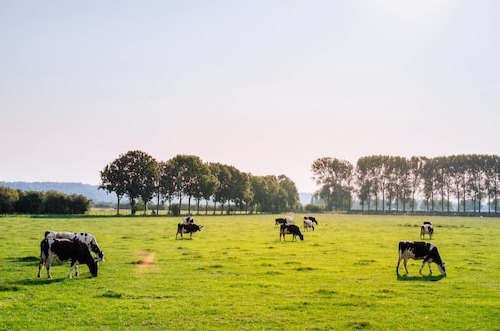
In W28 in the dairy landscape, the Food and Agriculture Organization (FAO) expects the 2023 global milk production to reach 944 million metric tons (mmt), an increase of 0.9% (year-on-year) YoY. This would be the second consecutive year with slow growth, owing to YoY milk output volume reductions in South America, Africa, Europe, and Oceania, offsetting the limited expansions expected in Asia, North and Central America, and the Caribbean. Various factors, such as lower producer margins, extreme weather events, and labor shortages, contribute to the anticipated milk output decline. Global trade in dairy products is forecast at 85 mmt in 2023, nearly the same as the 2022 level, as higher import demand in Central America, North Africa, the Middle East, and Southeast Asia is likely to be counterbalanced by import downturns in China, the European Union (EU), and Malaysia. The decline in the FAO Dairy Price Index to 118.7 on average in May-23 reflects lackluster global import demand, despite generally tight supplies from leading global exporters.
The skimmed milk powder price in France stabilized at the 10-year average after a declining period. However, the butter price continued to fall but remained relatively high compared to the 10-year average. French milk production in major exporting regions has been recovering after a decline in 2022, with moderate overall trends ranging from a slight decrease in New Zealand to controlled growth in the EU and the United States (US). However, milk production in France was significantly down at the beginning of 2023. The unit filler price on dairy farms also stabilized after a sharp increase, but downstream costs in collection, processing, packaging, and distribution activities continue to rise. Milk powder prices in France are stabilizing, while consumer products are experiencing high inflation.
Lastly, milk deliveries in Great Britain (GB) in Jun-23 increased by only 4 million liters, up 0.4% YoY, with daily deliveries averaging 34.82 million liters. The total milk volume for the first three months of the 2023 season, Apr-23 to Jun-23, reached 3.28 billion liters, a 0.5% increase compared to the same period in the 2022 season. While grass growth was relatively good in the early part of the season, the quality varied, and growth rates declined significantly in late May-23 and throughout Jun-23 due to hot and dry weather. This likely impacted milk yields, leading some farmers to dry off thinner cows early for welfare reasons and to reduce grazing pressure. The prolonged hot and dry spell may also have implications for forage stocks later in 2023. Despite a decrease in input costs, declining milk prices are influencing farmers' decision-making, with limited motivation to increase yields. In the first half of 2023, GB farmgate milk prices experienced a larger decline than in the same period in 2022. The overall GB farmgate average price decreased by almost USD 0.16/liter from Jan-23 to Jun-23, following a nearly USD 0.10/liter increase from Jul-22 to Dec-22.




